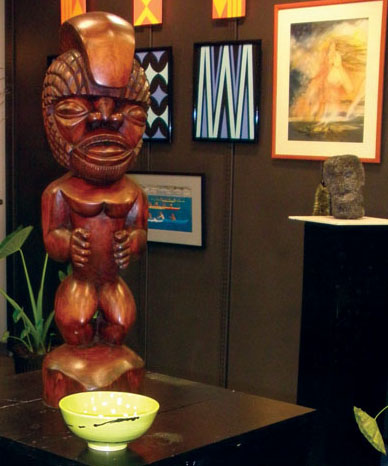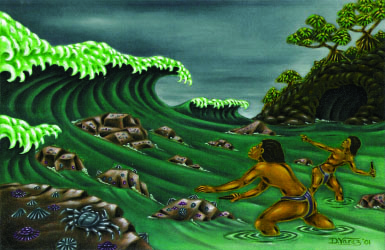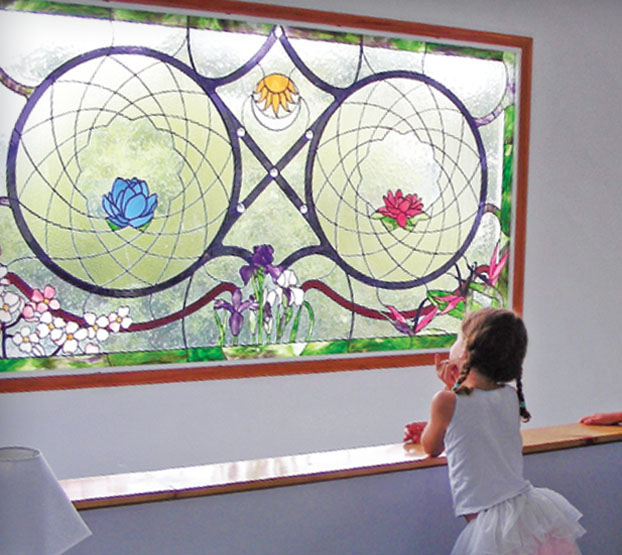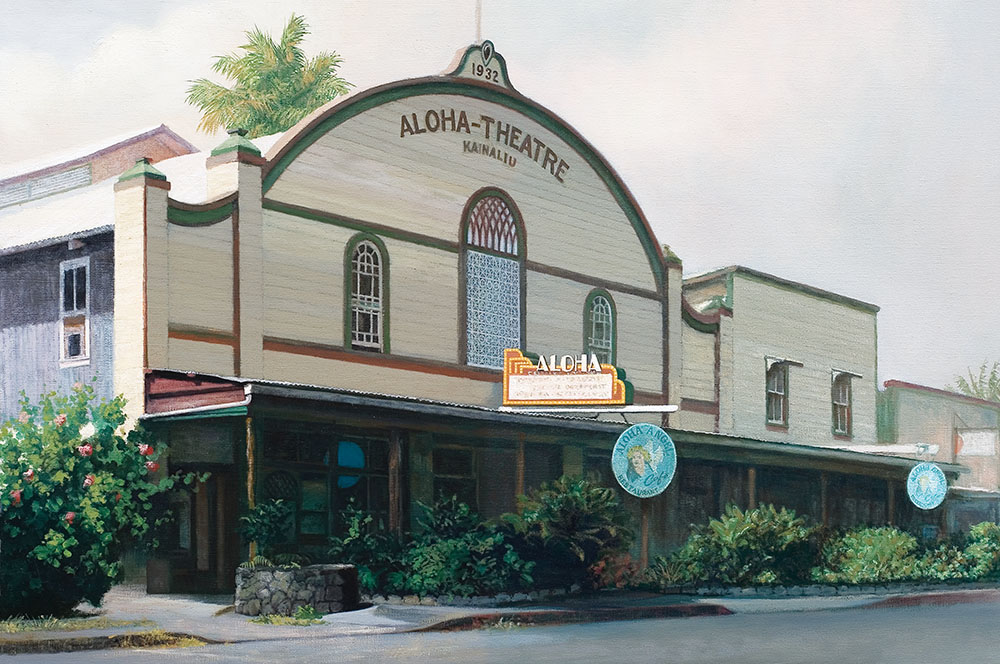
If Walls Could Talk: APAC’s Long History at the Aloha Theatre

By Le‘a Gleason

Every town has its theater. That place where people go to escape the confines of reality, get lost in a performance, or lose themselves on stage. To become something or someone else—as if to try on masks—has become the paramount of artistic expression in many cultures.
There’s a sort of raw energy that emerges in that moment of connection between audience and performer, and for the community of South Kona, that magic takes place at the Aloha Theatre.
For Artistic Director Jerry Tracy, where that magic comes from is no mystery. “Step inside. It’s obvious. This is a magical place, a wonderful old lady. There’s quite a lot of mana accumulated in the walls here, and I would even go so far as to say it’s a sacred place because it’s a gathering place for the community and has been since 1932,” he says.
In 1932, the Tanimoto Theatre was born and mainly showed American and foreign films as entertainment for workers in the coffee industry: Japanese movies on Mondays, Filipino on Wednesdays, and movies in English on Friday, Saturday, and Sunday.

In 1939, the Kona Lions Club produced Who Wouldn’t Be Crazy?, which is believed to have been the first community theater production in Kona. Soon after, Tanimoto Theatre became the Aloha Theatre and has been such ever since, despite changing ownership several times over the years.
In 1980, Alan and Susan Grodzinsky bought the building and remodeled the café next door, turning it into the landmark Aloha Café. Their daughter, Sacha, was born in the upstairs apartment around the same time.
During that same period, theatrical associations were beginning to form, and the beloved theater played host to a variety of acronyms: WHP, WCT, KCP, ACP, ACT, ATT, KAPA, and finally APAC. In 1991, the Aloha Performing Arts Company was born, and it has thrived ever since.
That was the same year Jerry made his way to Hawai‘i Island and—as many others have experienced—never left.
“I came here in 1991 as a guest director for Steel Magnolias and had another gig lined up on Maui which lost funding. I hung out for a while longer here and was asked to teach some classes and direct another show…and the rest is rock and roll history,” he says.
Also in 1991, new seats, a wood shop, an electrical shop, dressing room, and an enlarged stage were added to the theater. For the following ten years, Jerry remembers that patrons continued to show up for productions with cushions to sit on, despite the renovations.
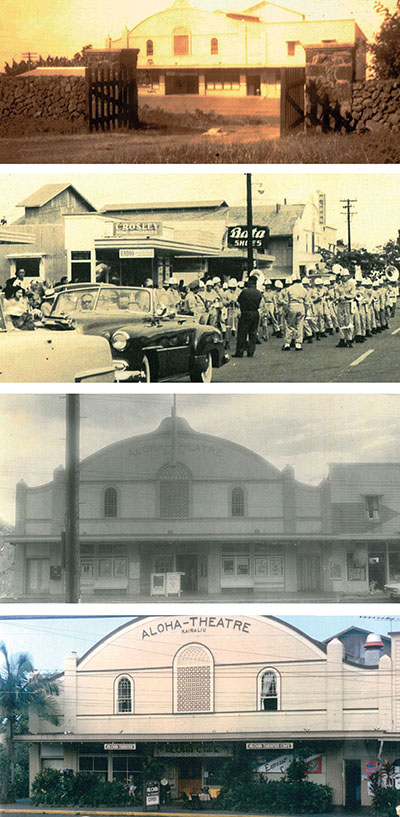
Today, Len and Sue Welter own the facility, although some might argue it is really collaboratively owned by the many people who have served to make the Aloha Theatre the successful venue it’s become.
“The [venue] itself is a big part of what draws people here, but the success of APAC falls squarely on the community involvement. I love the theater because it’s such a collaborative process,” Jerry says.
That collaborative process would not be what it is today without the many hands who pitch in at APAC. Among those are Barry and Gloria Blum, who have been involved with the company since 1988 and have become close friends with Jerry, as well.
The Aloha Theatre now boasts an eclectic array of productions throughout its yearly season, ranging from kids plays and musicals to well-known crowd favorite musicals, classic plays, and even a host of little-known plays produced as a part of the “Original Play Festival” (OPF), which will mark its twenty-second year this August.
“We accept plays that have not been produced and [have]not been published. They are brand new plays presented as staged readings with minimal technical presentation and actors carry their scripts. It’s a chance for a playwright to see their work… and it’s also a trial round for prospective directors as well. We get scripts from all over the country and sometimes out of the country. It’s taken on a life of its own,” Jerry says.
For Barry and Gloria, one shining moment came when Gloria won the Big Island Best Original Play Award in 1991.
Her play Jenny told the story of a young woman, labeled mentally retarded, who refused to be held back and went out on her own, met the man of her dreams, got married, and raised a family despite all odds against her.
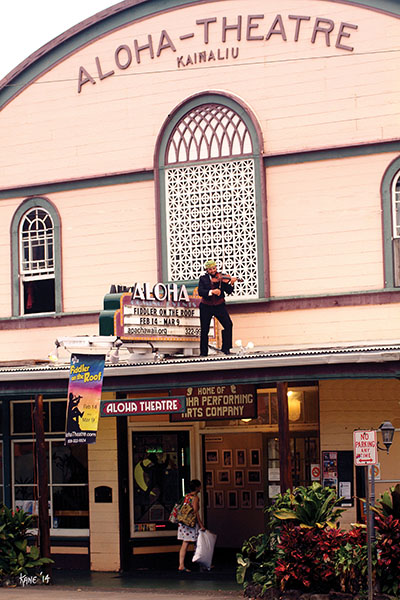 “Jerry played Jenny’s boyfriend and husband in his acting debut at the Aloha Theatre,” Barry remembers, continuing, “Every woman in the cast fell in love with Jerry.”
“Jerry played Jenny’s boyfriend and husband in his acting debut at the Aloha Theatre,” Barry remembers, continuing, “Every woman in the cast fell in love with Jerry.”
As part of this year’s regular season, Jerry just finished directing the classic play Waiting For Godot, one that is not as well-known, and perhaps draws less of a crowd. He says that APAC walks a fine line in choosing its season because drawing in patrons is a consideration. And, it’s the responsibility of a theater to push that envelope once in a while.
“The way I look at it, we are the theater in our community. If we don’t bring this to our community, who is going to? It’s a classic of the theater, and we are a producing theater, so it’s incumbent on us to expose our community to these kinds of experiences. Those who see it will never forget it…it’s also a responsibility of our theater company, and I think we are fulfilling that,” he says.
Up next is Annie Jr., a children’s adaptation of the classic musical. The OPF is to follow, and in the upcoming season, two musicals with major name recognition: Jekyll and Hyde and Evita.
Last season, APAC produced Fiddler on the Roof, its most financially successful show. Jerry has found that the secret to success is more than just financial. It’s in mastering the art of human interaction.
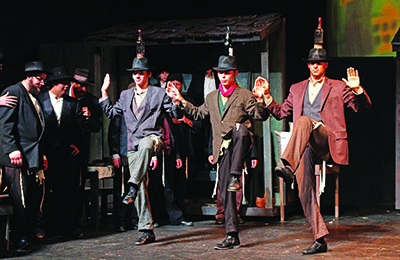
“Theater is…interactive because the energy in the auditorium goes both ways. There’s something that is very primal about sitting in an audience with other people and enjoying live performance. It’s not replicable. The people on the stage are pumping out energy, but the people in the audience are also giving energy in their reactions, their laughing and clapping…it’s a giving back-and-forth that is unique to the live theater,” Jerry says.
If walls could talk, longtime members like Barry say they would speak on how the experience of doing theater is life-changing.
“They would tell of hundreds, possibly thousands of individuals, who discovered depths of feeling within themselves that they never before appreciated. Children becoming adolescents, eventually coming-of-age as adults: learning about human feelings, fears, sensitivities, discovering and overcoming weaknesses and fears, gaining confidence and maturity, and building self-esteem. People uncovering anger, love, passion, courage, tears, and laughter. No one leaves unmoved.”
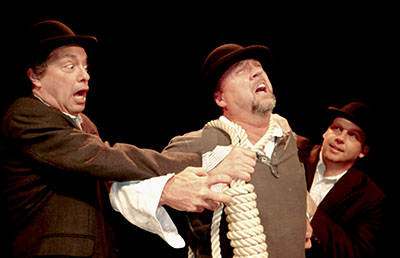
Not every step of the way has been easy, though. The organization has very few paid staff members and relies heavily on volunteers. Jerry says APAC is continuously getting better and better at what it does.
“We’ve tightened up the ship physically and we have tightened up metaphorically too, [in] that we are very careful to make sure that what we put on this stage reflects the artistic integrity that APAC has come to stand for in our community,” he says.
Jerry laughs as he remembers another step of the way that wasn’t easy.
“In 1997 I was in a show here being directed by a guest director and I ended up getting stabbed on stage. I was a minor character so I was supposed to be killed and didn’t appear in the rest of the play anyway, so I was rushed to the hospital and I made it back in time for the curtain call that evening,” he says.
Many other moments as memorable as this have sunk into the walls and floors of the Aloha Theatre.
For Barry and Gloria, who have produced numerous shows, South Pacific stands out.
“Our preference has been to produce shows that have a heart—shows that resonate with the audience on multiple levels and that have meaning for our time. The show’s message about racism and tolerance resonates with all of us in Hawai‘i. The beauty of the music and the exuberance of the script made it a total joy,” Barry says.

Over countless multitudes of applause, gasps, and sighs, people have bonded in this place in costumes of every type, singing and speaking countless sounds. The biggest productions, which can be fifty-or-so large, are all about people skills.
“We practically have to be psychologists to work with the many different types of people. Beyond the artistic endeavor, [it’s] about people coexisting, treating each other with respect, listening, focusing…it’s a whole other level of human interaction. I am a believer that the arts are the soul of a community and you have to have a home for the arts. We need these places to gather to enjoy art together,” Jerry says.
The Aloha Theatre, that “wonderful old lady” has become a South Kona landmark for the community and for Jerry, who says he’s devoted the best years of his life to it.
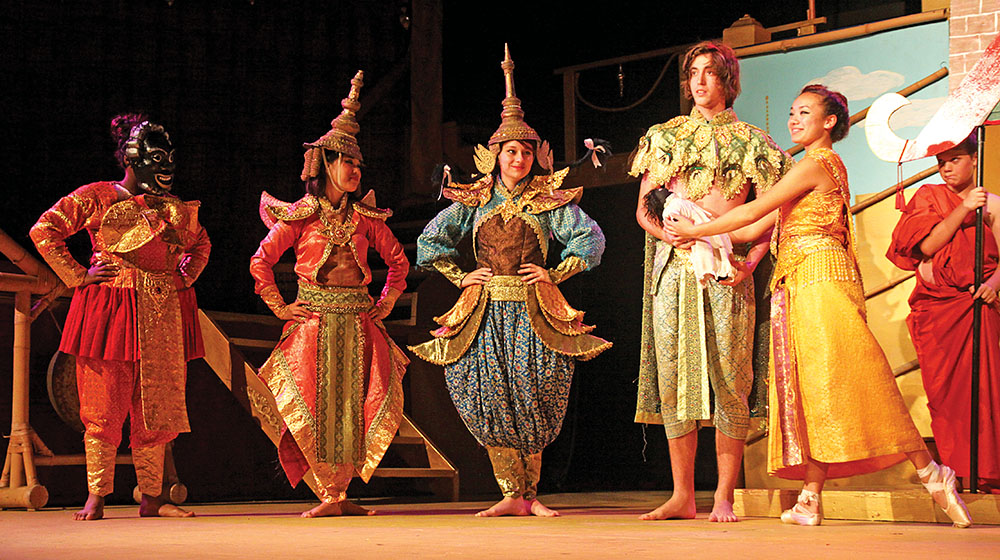
“It’s a magical place, and everyone who comes here recognizes that and enjoys contributing to the magic,” he says.
A drive on the scenic South Kona highway is surely worth a stop at the old, unassuming wooden building marked Aloha Theatre. Inside, it’s a space of vibrant creativity, and there’s no need to bring a cushion. ❖
Contact Aloha Theatre: ApacHawaii.org
Contact writer Le‘a Gleason: lgfreelancehawaii@gmail.com
